This article is more than 1 year old
The Eigiau Dam Disaster: Deluges and deceit at the dawn of hydroelectric power
A trip to beautiful Snowdonia lakes takes in early hydroelectric experiment... and a tragedy for a village
Geek's Guide To Britain They say that it is the history on one's doorstep which is most often overlooked. So it is with my latest piece for El Reg's Geek's Guide to Britain which concerns events in a quiet Welsh village that I called home between the ages of five and 18.
My father started work at the Aluminium Corporation Ltd plant in Dolgarrog in 1971 but it was not until some years later that I discovered that the village played an important part in the development of hydroelectric power in the UK and that in 1925 a disaster occurred which changed the geography of the area when a dam wall blew out, releasing a torrent of water and debris that swept a large part of the original village away and killed more than a dozen people.
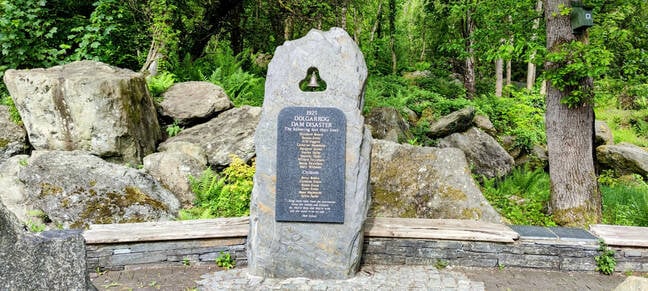
The commemorative monument at the start of the footpath listing the dead of the 1925 disaster (click to enlarge) Pic: Alun Taylor
Aluminium, mountains, and water
The story of Dolgarrog is intimately connected to the development of the aluminium industry. The commercial process for extracting this usefully light and strong metal was established in 1856 but serious production didn't take off until 1887. By 1907, global production stood at 12,000 tons, 2,000 of that coming from the British Aluminium Corporation's plants in Scotland.
What made aluminium production rather different from that of other metals was the need for electrical power and lots of it. The extraction of aluminium from alumina required 18,000 kilowatt hours per ton of metal to power the reduction furnaces. You didn't build aluminium production facilities near the raw material (the main source at this time was Les Baux in France, hence the name Bauxite), you built them where electricity was cheap.
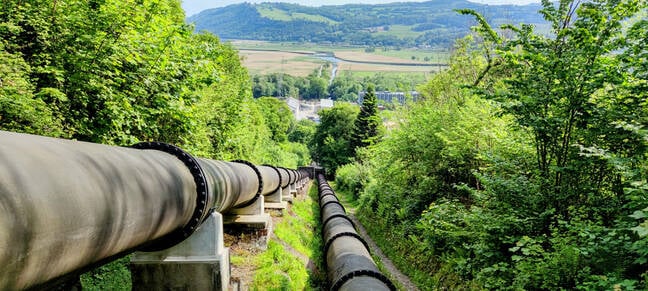
The pipeline carrying water from Cowlyd and Coedty to the Dolgarrog power station today (click to enlarge) Pic: Alun Taylor
The glacial lakes that dot the Carneddau, that large mountain mass to the west of the Conwy Valley made up of mountains with names like Carnedd Dafydd, Carnedd Llewelyn, Foel-Fras and Pen Llithrig y Wrach and which form a rough triangle between the towns of Conwy, Betws-y-Coed and Bangor, had been viewed as a suitable source for the commercial supply of both water and hydroelectric power since the late 19th century.
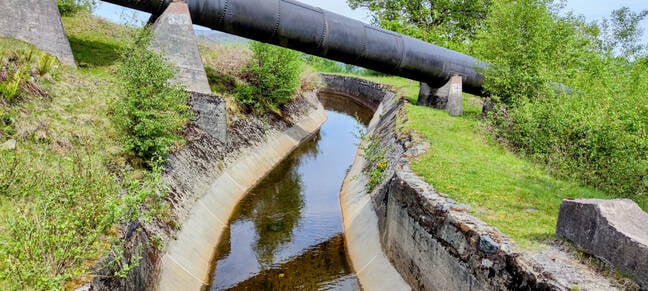
One of the leats that criss-cross the mountains above Dolgarrog. Many, like this one are still in use today (click to enlarge) Pic: Alun Taylor
Lakes like Llyn (Welsh for lake) Dylun below the mountain of Foel Frach, Llyn Eigiau, Ffynnon Llugwy below Carnedd Dafydd, Llyn Cowlyd and Llyn Crafnant shared common features of being near to significant inclines and geographically close to the fast-growing holiday resorts on the North Wales coast like Llandudno and Colwyn Bay and the industrial areas around Crewe and Wrexham. There was also the local slate quarrying industry with an eye for the electrification of its narrow-gauge railways.
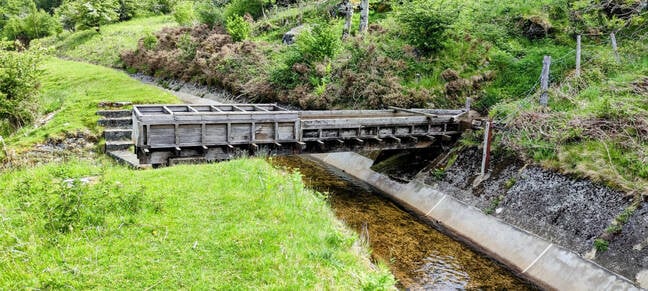
This wooden gutter carries water from a mountain stream over one on the leats (click to enlarge) Pic: Alun Taylor
The first hydroelectric power station in the area was established at Cwm Dyli on the southern flank of Snowdon and was powered by water flowing from Llyn Llydaw. Built in 1905 by the North Wales Power and Traction Co. Ltd. it was the largest hydroelectric power station in Britain at the time and is commonly regarded as the oldest grid-connected hydroelectric station in the world.
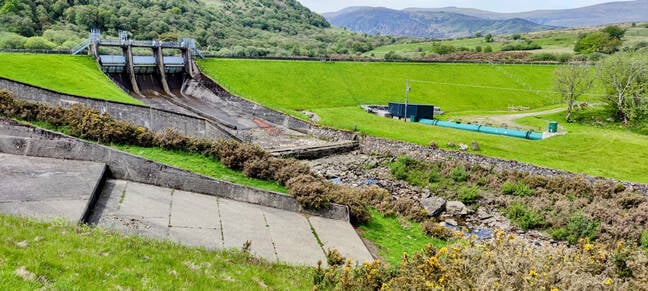
Coedty Dam today. The concrete spillways are new. The entire section in this image collapsed on the night of the disaster (click to enlarge) Pic: Alun Taylor
Cwm Dyli also generated the electricity used to power Britain's first longwave wireless telegraph transmitting station built by Marconi in 1912 at Cefn Du near Waunfawr. The foundations of the buildings and masts are still visible today though the station closed in 1938.
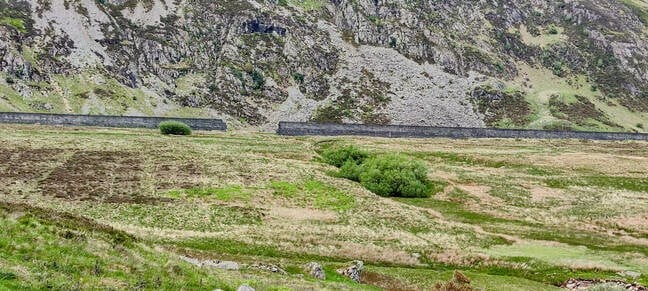
The breach in Eigiau from the far side of Cwm Eigiau. The dam is little more than a long concrete wall. The floodwater carved a channel into the valley floor before joining the Afon Porth-Llwyd in the foreground (click to enlarge) Pic: Alun Taylor
The ACL comes to town
In 1907, with aluminium selling for a heady £120 per ton, a new company called the Aluminium Corporation Limited (ACL) decided that the ideal place for a processing plant was in the Conwy Valley in the small village of Dolgarrog. Llyn Eigiau, which lies 370m above the valley floor, would be dammed with a 3,250ft (990m) long, 26.5ft (8m) high concrete wall and a 1,300ft (396m) long earth embankment designed to hold 4 million cubic metres of water which would be directed along the Afon Porth-Llwyd, a leat and a pipeline into turbines in the new factory. To get production moving, power was initially drawn from Cwm Dyli via a new three-phase powerline.
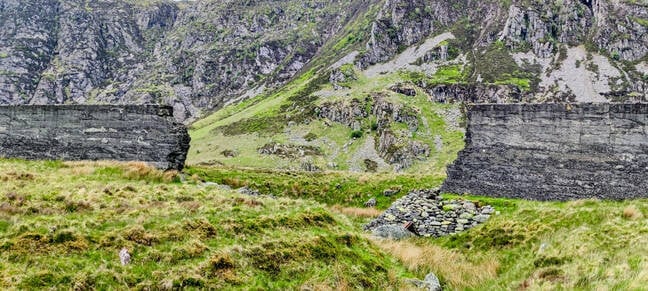
The breach in Eigiau dam. Note the channel that the flood scoured out. The stonework around the base to the right was added after the disaster to hide the shallow foundations (click to enlarge) Pic: Alun Taylor
Initial success was short-lived. By the end of 1908 aluminium was selling for less than £60 per ton. The undercapitalised ACL promptly went titsup, as did the contractors building the Eigiau dam, which was only two-thirds completed. The enterprise was revived in short order by Scottish businessman Kenneth McKenzie Clark with the new ACL being formed in 1909. But it was not until February 1910 that work on the dam at Eigiau restarted, finally finishing in November 1911. The gap in the construction of the Eigiau dam was to have tragic consequences.
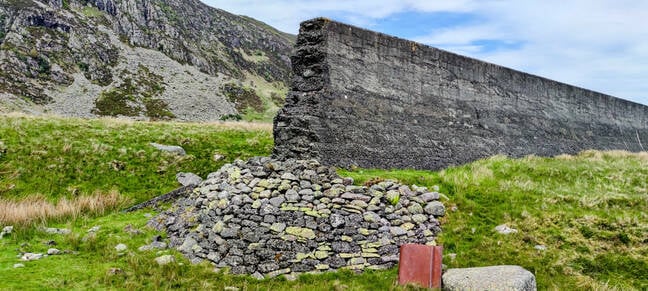
Close up of the eastern side of the breach. The day after the blow-out you could walk over the top of the breach. The gap you see today is the work of ACL engineers (click to enlarge) Pic: Alun Taylor
The next 15 years were ones of rapid development for the ACL plant in Dolgarrog and the new model village that sprang up next to it. To keep up with the demand for electricity – public supply started in 1922 to Colwyn Bay, Conwy and Llandudno, and was later extended to Wrexham and Hawarden near Chester – a new power station, the one you see today, was built next to the aluminium works and another was built downstream from Eigiau at Coedty to ensure a steady and reliable supply of water. By the mid-1920s, the mountains behind Dolgarrog were crisscrossed by a network of leats and tunnels connecting the reservoirs at Eigiau, Cowlyd, Coedty, Dulyn, and Llugwy.
All these interconnectors were necessary because though the physical geography of the Carneddau was ideal for hydroelectric schemes, and though North Wales has a reputation for being soggy, local rainfall is both too seasonal and too irregular to be relied on to keep individual reservoirs topped up.
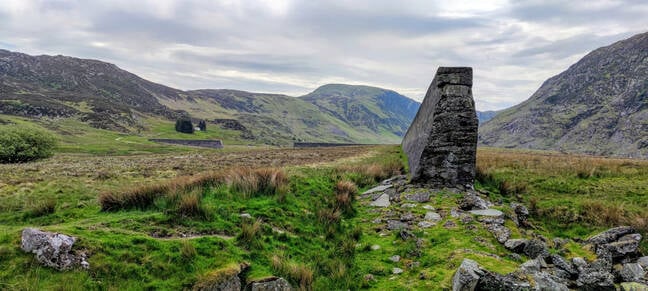
From the breach looking up into Cwm Eigiau. The large gap in the short leg of the dam was to be a revised spillway if the dam was ever put back into use (click to enlarge) Pic: Alun Taylor
A disaster waiting to happen
Of course, irregularity can go both ways. The weeks leading up to the night of 2 November 1925 had seen heavy rain throughout the Carneddau. Twenty-five inches fell in Cwm Eigiau in the five days before 2 November. Ten days before, villagers in Dolgarrog had already reported flooding. The ACL said it was due to the Coedty leat overflowing, but the leat into Coedty entered the reservoir at the high watermark – if it overtopped, the reservoir must already have been full.
When the Eigiau dam failed on 2 November it was through a blowout at the bottom of the dam at the place where the first and second phases of construction joined. The blowout started to feed more and more water into the Coedty dam. The floodwaters then overtopped the dam at Coedty and started to wash away the exposed earth embankment on the outside of the dam. Strong winds blowing the length of the valley and forcing water over the dam had done the same at Cowlyd the previous year and only frantic reinforcing with sandbags had prevented a failure.
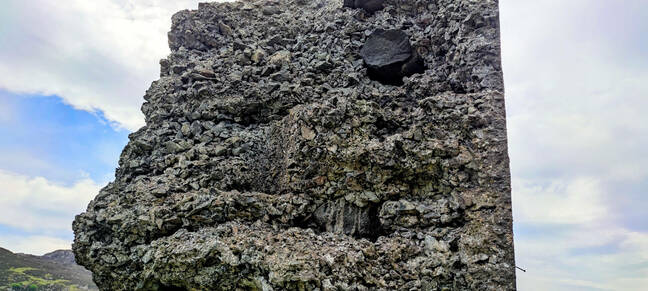
Close-up of the dam showing the voids and rocks typical of the poor quality concrete (click to enlarge) Pic: Alun Taylor
The blowout at Eigiau became serious at around 20:45 on 25 November and released some 1.4 million cubic metres of water over the following hour. The torrent scoured a channel 20 metres wide and three metres deep into the ground. 200 metres from the breach the flood joined the Afon Porth Llwyd which flowed into Llyn Coedty reservoir, 2.5 miles downstream.
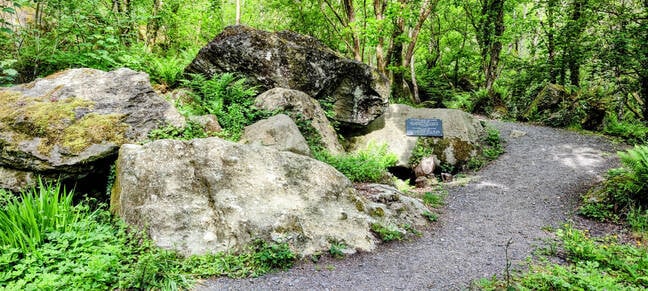
These are some of the boulders swept down the side of the valley when Coedty dam failed (click to enlarge) Pic: Alun Taylor
The overflow at Coedty soon became catastrophic and swept away the last of the earth embankment. This caused the now unsupported concrete core membrane to collapse, leaving a breach 60 metres wide at the top and 18 metres wide at the bottom. The resultant wall of water, mud, rock and concrete estimated at some 1.35 million cubic metres hit the northern end of Dolgarrog village sometime between 21:15 and 21:35. Witnesses described the wall of water "as being 50 feet wide and quite as high." Some of the rocks swept down the course of the river weighed more than 500 tons.
This newsreel clip from British Pathé gives some idea of the devastation the flood wrought on Dolgarrog.
A large part of the old village was swept away and 16 people lost their lives – 10 adults and six children. The last body, that of Mrs Sinott, was not recovered until 10 months after the flood when it was discovered washed up on the mudflats at nearby Tal-y-Cafn. Thankfully, most of the "new" village built to accommodate ACL workers lay south of the path of the flood and the village cinema, which was full that night, was also undamaged.
Playing the blame game
The ACL and its omnipotent managing director Henry "Harry" Jack now swung into damage control by suggesting the disaster was caused by a catastrophic but wholly unforeseeable failure of the dam wall at Eigiau that was entirely the fault of the contractors who built it rather than the ACL itself.
Reports showed the dam wall was filled with both large boulders and junk such as sections of cut-up railway line. There were also large voids and sections that had not been built far enough into the glacial clay that formed the valley floor. Those reports were right. You can see the poor quality of the concrete for yourself today. You can also see with the naked eye that the phase-two dam wall to the east of the breach is narrower than the phase-one wall to the west. Where the two phases of the dam wall and the two phases of foundation construction met (when construction halted in 1908 the latter had extended further than the former) was obviously a potential weak spot.
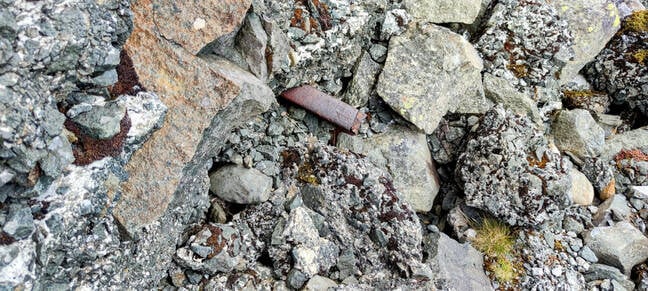
The 1925 inquest described how the dam cement was full of all manner of rubbish including chopped-up railway lines (click to enlarge) Pic: Alun Taylor
Following an inquest, the blame was unceremoniously dumped on the deceased overseer of concrete mixing called Mr Wilson and his nameless underlings employed by the company Bott & Stennett, the original contractors who had gone bankrupt in December 1908. This, of course, like the concrete used to build the dam, was in large parts rubbish.
Two days after the disaster, a local village policeman, PC Jones, walked across the top of the dam over the blowout and described the hole as being 72 feet long and 15 feet high (22m x 4.5m). Giving evidence at the inquest, PC Jones also noted that in previous years seepage from the dam had been so bad that the road up the valley was sometimes ankle-deep in water. In other words, it was common knowledge that the Eigiau dam was a leaky affair. But that wasn't half of it.
The water management system that tied the reservoirs at Eigiau and Coedty together and drew in water from Dulyn and Melynllyn was a disaster waiting to happen. The system was designed to ensure that abundant water was always available for the hydroelectric turbines in Dolgarrog, not to deal with too much water. There were no contingencies to close the various sluice gates that controlled the flow of water into the reservoirs in case of an emergency.
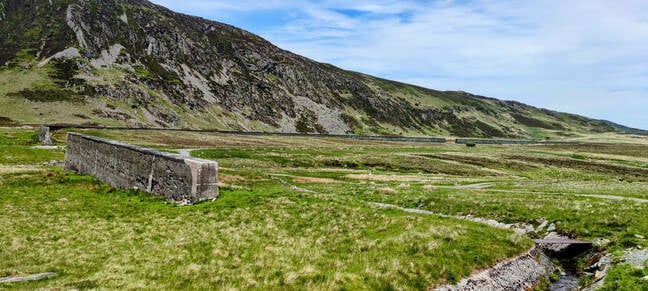
Essentially a giant L-shaped wall blocking the mouth of Cwm Eigiau the final quarter of the dam (at extreme right here) was a simple earth embankment (click to enlarge) Pic: Alun Taylor
The spillways at Eigiau and Coedty were both far too small; the one at Coedty was originally 25ft (7.5m) wide but was rebuilt at 58ft (17.5m) and was further expanded in 1957 and 1975. The abortive plans to rebuild the Eigiau dam involved a spillway both lower and three times the width of the original. There was also the question of how the dam at Coedty had been built. If a concrete or stone facing had been applied to the outside of the dam to prevent overlapping washing away the supporting earth bank, disaster could have been avoided.
As seen today, the breach in the Eigiau dam reinforces the impression the ACL wished to give that it was the direct cause of the flood that swept down the valley. However, the gap now is the work of the ACL men who in the weeks following the disaster tidied up the breach, demolished the "arch" over which PC Jones walked and covered over the exposed ends of the dam foundation to conceal the depths of the foundation. The idea was to give the impression that a large section of the Eigiau dam wall had suddenly collapsed.
The events of 2 November were not the end of hydroelectricity in Dolgarrog. The dam at Cowlyd, and the tunnel connecting it to Eigiau, which was completed in 1928, was already rendering the dam at Eigiau somewhat superfluous. Combined with the rebuilt dam at Coedty (finished by March 1927) there was an ample supply of water to power the aluminium plant below. The leats and pipelines are now configured as two independent feeds into the power station from Llyn Cowlyd and Llyn Coedty, generating 17MW and 15MW of electricity respectively.
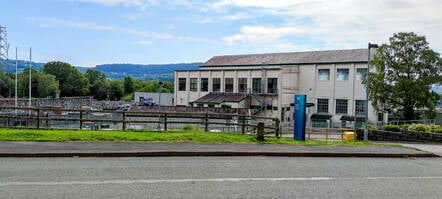
The hydroelectric power station in Dolgarrog: still producing power today (click to enlarge) Pic: Alun Taylor
The disaster had one benefit. The Dolgarrog flood and the failure of the Skelmorlie dam in Scotland, which had killed five earlier that same year, provided the impetus for the 1930 Reservoirs (Safety Provisions) Act, which laid down such basic rules as the requirement that a qualified civil engineer must supervise the construction of any large dam and that any dam holding back more than 22.7 million litres of water should be subjected to a thorough inspection once every 10 years by an expert in dam design. The sacrifice at Dolgarrog may have saved lives elsewhere.
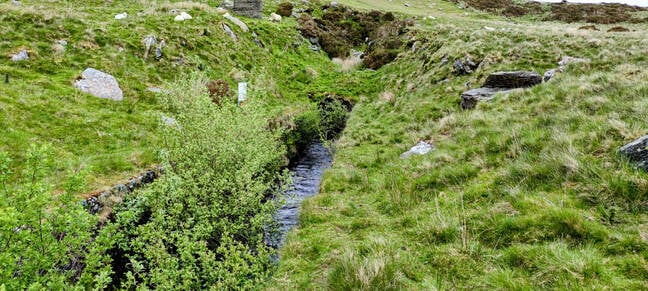
The exit from the tunnel that connected Llyn Dulyn to Llyn Eigiau. The system was designed to ensure maximum flow into Eigiau rather than manage the reservoir level (click to enlarge) Pic: Alun Taylor
Walking the scene of the disaster
The best place to start is the small memorial garden next to the bridge over the Afon Porth-Llwyd just across the road from Dolgarrog power station, which is now operated by RWE NPower UK.
From here a footpath runs up through the boulder field created on that terrible night in 1925. Halfway up the valley wall, the path turns left crossing under the pipeline that runs from the valve station at the top of the incline into the power station below. Be warned, this switchback footpath is very steep and rugged. Suitable footwear and some degree of fitness are essential. I don't consider myself unfit but halfway up on a moderately warm day I seriously considered turning back and driving up to the dams.
From the valve station follow the track to the right around the foot of Penardda then continue around to the dam at Llyn Coedty. From here a track follows the lower contours of Moel Eilio to Llyn Eigiau, and you can push further up Cwm Eigiau or climb to the reservoirs at Dulyn and Melynllyn. The former is infamous for the remains of various aircraft wrecks that are scattered around it, many dating from the Second World War. After one visit to Dulyn, my father returned with what he swore was part of the engine cowl of a Heinkel He 111.
To get to the reservoir at Cowlyd from the Eigiau breach, you can either follow the footpath over the saddle that connects the spur of Pen Llithrig y Wrach – which separates Cwm Eigiau from Cowlyd – with Moel Eilio or retrace your steps around the feet of Moel Eilio. The latter is a much longer walk but also much easier. From the dam at Cowlyd, you can follow the course of the pipeline and leat back to the valve house above Dolgarrog and then follow the pipeline down the incline into the village. This walk should take around four hours.
Llyn Eigiau dam
GPS: 53.17024, -3.91095
Getting there
By car: From Conwy take the B1506 up the Conwy Valley, at Tal-y-Bont take the unsigned right turn towards Llyn Coedty and Llyn Eigiau just after the village pub. There is a small car park three-quarters of a mile from the dam breach. These are narrow, single-track lanes so take a map and take care, you'll find fearless sheep on the road just standing there daring you to move them.
Public transport: The nearest railway station is at Dolgarrog and the valley has a regular bus service. The train station is four miles as the crow flies from the dam breach but the elevation means it is a good four-hour walk.
The recently developed Adventure Parc Snowdonia is built on the site of the old ACL Aluminium Works in Dolgarrog and offers various accommodation options including the Hilton Garden Inn Snowdonia.
Nearby pubs, Y Bedol in Tal-y-Bont and Ye Old Bull in Llanbedr-y-Cennin, are worth calling in for a jar at the end of the day.
Further reading
The Men Who Drowned Dolgarrog by John Lawson-Reay ISBN 978-1-84524-286-2
Dolgarrog: An Industrial History by Eric Jones ISBN 0-901337-50-1
Marconi and his Wireless Stations in Wales by Hari Williams ISBN 978-0-86381-536-2 ®
